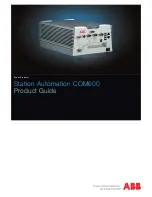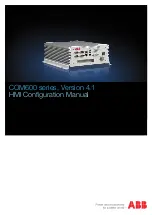
Chapter 10 Quality of Service (QoS)
VSG1432-B101 Series User’s Guide
169
Token Bucket
The token bucket algorithm uses tokens in a bucket to control when traffic can be
transmitted. The bucket stores tokens, each of which represents one byte. The
algorithm allows bursts of up to
b
bytes which is also the bucket size, so the
bucket can hold up to
b
tokens. Tokens are generated and added into the bucket
at a constant rate. The following shows how tokens work with packets:
• A packet can be transmitted if the number of tokens in the bucket is equal to or
greater than the size of the packet (in bytes).
• After a packet is transmitted, a number of tokens corresponding to the packet
size is removed from the bucket.
• If there are no tokens in the bucket, the ZyXEL Device stops transmitting until
enough tokens are generated.
• If not enough tokens are available, the ZyXEL Device treats the packet in either
one of the following ways:
In traffic shaping:
• Holds it in the queue until enough tokens are available in the bucket.
In traffic policing:
• Drops it.
• Transmits it but adds a DSCP mark. The ZyXEL Device may drop these marked
packets if the network is overloaded.
Configure the bucket size to be equal to or less than the amount of the bandwidth
that the interface can support. It does not help if you set it to a bucket size over
the interface’s capability. The smaller the bucket size, the lower the data
transmission rate and that may cause outgoing packets to be dropped. A larger
transmission rate requires a big bucket size. For example, use a bucket size of 10
kbytes to get the transmission rate up to 10 Mbps.
Single Rate Three Color Marker
The Single Rate Three Color Marker (srTCM, defined in RFC 2697) is a type of
traffic policing that identifies packets by comparing them to one user-defined rate,
the Committed Information Rate (CIR), and two burst sizes: the Committed Burst
Size (CBS) and Excess Burst Size (EBS).
The srTCM evaluates incoming packets and marks them with one of three colors
which refer to packet loss priority levels. High packet loss priority level is referred
to as red, medium is referred to as yellow and low is referred to as green.
The srTCM is based on the token bucket filter and has two token buckets (CBS and
EBS). Tokens are generated and added into the bucket at a constant rate, called
Committed Information Rate (CIR). When the first bucket (CBS) is full, new
tokens overflow into the second bucket (EBS).
Summary of Contents for VSG1432-B101 - V1.10
Page 2: ......
Page 8: ...Safety Warnings VSG1432 B101 Series User s Guide 8 ...
Page 10: ...Contents Overview VSG1432 B101 Series User s Guide 10 ...
Page 20: ...Table of Contents VSG1432 B101 Series User s Guide 20 ...
Page 21: ...21 PART I User s Guide ...
Page 22: ...22 ...
Page 40: ...Chapter 2 The Web Configurator VSG1432 B101 Series User s Guide 40 ...
Page 67: ...67 PART II Technical Reference ...
Page 68: ...68 ...
Page 74: ...Chapter 5 Network Map and Status Screens VSG1432 B101 Series User s Guide 74 ...
Page 146: ...Chapter 8 Home Networking VSG1432 B101 Series User s Guide 146 ...
Page 150: ...Chapter 9 Static Routing VSG1432 B101 Series User s Guide 150 ...
Page 174: ...Chapter 11 Policy Forwarding VSG1432 B101 Series User s Guide 174 ...
Page 192: ...Chapter 12 Network Address Translation NAT VSG1432 B101 Series User s Guide 192 ...
Page 198: ...Chapter 13 Dynamic DNS Setup VSG1432 B101 Series User s Guide 198 ...
Page 224: ...Chapter 16 Firewall VSG1432 B101 Series User s Guide 224 ...
Page 230: ...Chapter 18 Parental Control VSG1432 B101 Series User s Guide 230 ...
Page 278: ...Chapter 25 Traffic Status VSG1432 B101 Series User s Guide 278 ...
Page 282: ...Chapter 26 IGMP Status VSG1432 B101 Series User s Guide 282 ...
Page 290: ...Chapter 28 Remote Management VSG1432 B101 Series User s Guide 290 ...
Page 294: ...Chapter 29 Time Settings VSG1432 B101 Series User s Guide 294 ...
Page 298: ...Chapter 30 Logs Setting VSG1432 B101 Series User s Guide 298 ...
Page 314: ...Chapter 34 Troubleshooting VSG1432 B101 Series User s Guide 314 ...
Page 344: ...Appendix A Setting up Your Computer s IP Address VSG1432 B101 Series User s Guide 344 ...
Page 354: ...Appendix B IP Addresses and Subnetting VSG1432 B101 Series User s Guide 354 ...
Page 380: ...Appendix D Wireless LANs VSG1432 B101 Series User s Guide 380 ...
















































